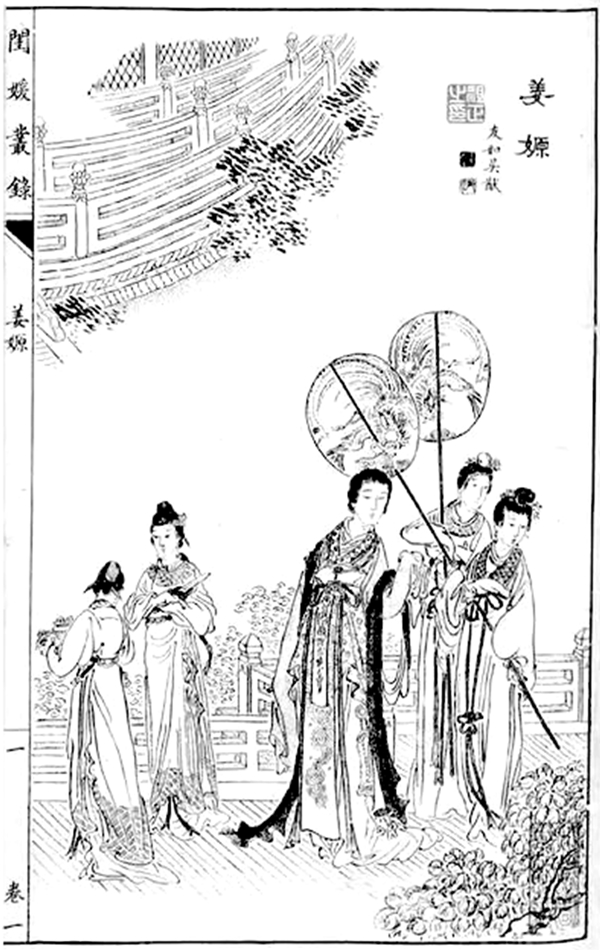


Delving into Chinese women’s distant past

FILE PHOTO: An illustration of Chinese aristocrat women collected in the Collection of Historical Materials on Ancient Chinese Women’s Social Life
Historical records documenting women’s social lives form an essential part of a complete historical narrative, but have often been overlooked in historical research. Exploring these resources is crucial for revitalizing studies on the history of women and gender. Two primary methods—compilation and research—play a pivotal role in uncovering their value. This paper uses the compilation of the Collection of Historical Materials on Ancient Chinese Women’s Social Life (National Library of China Publishing House, 2023, hereafter referred to as the Collection) and research on the large-scale, women-focused encyclopedia Lianshi as examples to illustrate this point.
Historical narratives through ancient texts
The Collection employs photocopying to gather 147 ancient texts related to women’s social lives, faithfully reproducing the calligraphy styles of printed or manuscript editions. This approach significantly helps to facilitate in-depth research on the history of Chinese women’s social lives.
The texts in the Collection are divided into four sections: “Norms for Women,” “Biographies of Women,” “Women’s Daily Lives,” and “Women’s Arts and Literature.” Lianshi, included in the “Women’s Daily Lives” section, was compiled by Wang Chutong during the Qing Dynasty and edited by 51 distinguished scholars. The original edition, printed in 1797, consists of 100 volumes and one supplementary volume, spanning 36 sections and comprising approximately 1.5 million characters. Known as the “encyclopedia of ancient Chinese women’s social lives,” Lianshi is a vital historical resource for studying the history Chinese women.
Studying Lianshi requires not only thorough examinations of its compiler Wang Chutong and the 51 editors but also studies of their interactions and academic exchanges. Through the compilation of this work, they formed a special academic group, a group long ignored in the history of scholarship—men who compiled historical materials on women’s social lives.
Among the contributors to Lianshi were the wives and concubines of male scholars, a group often overlooked in historical research. These women, known for their considerable knowledge and cultural acumen, played indispensable roles in the compilation process. Although their names are absent from the list of compilers and editors, their contributions were crucial for the success of this unique encyclopedic work on Chinese women. As scholar Xu Yanping notes, women’s relationships with reading and books were often dismissed as mundane daily life phenomena, hence intentionally or unintentionally neglected.
Contributions to gender analysis
Analyzing objects related to women’s social lives in Lianshi requires not only clarifying their functional meanings but also delving into the value systems and ideologies they represent. For example, in the “Caps and Belts” section of Lianshi, items like “mi li” (a headscarf typically used to cover the entire body) are more than mere shields against wind and sand; they also symbolize restrictions on women’s physical presence, preventing bodily interactions and touch.
As Li Xiaojian observes, “Writing tools were initially exclusive to male scholars,” while women used needlework to express emotions and document their inner world. In her work Embroidery Manual, Qing Dynasty female embroidery master Ding Pei said, “[women] use the needle as a pen, fine silk as paper, and silk thread as the ink and pigments; the materials are extremely simple yet widely used. Embroidery is the stationery of the women’s chamber.” This insight is exemplified in the “Needlework” section, where embroidery emerges as not only a production skill but also a medium for women’s self-expression.
In ancient China, women’s jewelry went beyond mere adornment, serving as meaningful gifts that signified social hierarchy and status. In private, upper-class circles, particularly between lovers or spouses, jewelry acted as an emotional medium, facilitating intimate exchanges. This highlights the symbolic capital embedded in such adornments.
A provocative question posed by Japanese feminist scholar Ueno Chizuko—“What did women use during menstruation before modern sanitary pads?”—finds an answer in Lianshi: “Today’s women apply cloth towels within their underwear, referred to as ‘Chen Laolao,’ for menstrual hygiene.” This “Chen Laolao,” generally known as menstrual belts in the past and a precursor to today’s menstrual pads, illustrates the transformations in women’s social lives.
Visual historiography
Lianshi primarily excerpts historical accounts without detailed annotations or analyses. To address this limitation, visual evidence such as sculptures, inscriptions, utensils, paintings, clothing, and other artifacts can supplement the textual gaps in ancient women’s narratives.
For instance, Lianshi references women “carrying water ‘weng’ jars,” but provides little detail about their appearance or usage. A mural from a Wei and Jin dynasties tomb in Jiuquan, Gansu, offers vivid insight into their form and function. It depicts a woman of the Qiang nomads carrying a ceramic jar with a wide mouth, slender neck, bulging body, narrow base, and two handles. The handles facilitate the threading of ropes for carrying, while the slender neck minimizes spillage from movement.
Additionally, the “Dressing and Grooming” section of Lianshi includes a line from Tang Dynasty poet Wang Jian’s poem, the “Palace,” which depicts the court maids washing their hands around a golden basin in clusters, then drying their hands with red towels before entering the palace gate. While Lianshi offers no further details about the Tang hand-washing gold basins, these can be referenced by the plain gold basin from the Tang Dynasty in the collection of the Shaanxi History Museum. The Song Dynasty painting “Washing Hands and Viewing Flowers” also illustrates aristocratic women washing their hands. Through the convergence of textual records, visual representations, and material artifacts, a more vivid reconstruction of women’s lives emerges.
Guo Haiwen is a professor from the School of History and Civilization at Shaanxi Normal University.
Copyright©2023 CSSN All Rights Reserved